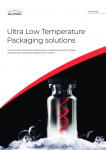Acquisition looming in Calyx Pharma’s future, says CEO
Calyx is also expanding its business to offer new classes of APIs, for example shifting into peptide chemistry and antiretroviral agents, and investing in R&D both to make its API production process more efficient and to offer additional contract services to pharmaceutical customers.
To date, the business model is to provide quality APIs from the drug discovery stage right through clinical development and up to product launch, with its activities split approximately 50:50 between bulk API sales and contract manufacturing and other services.
Now the ambition is to move further up the value chain with a broader offering in contract research and manufacturing services (CRAMS). “There is so much that the company can do in the area of chemistry,” said Shah. “Calyx has not even started to scratch the surface yet in secondary services.”
In an interview, Shah described the fast pace of growth at Calyx since it was set up in 1979 with just three staff. Over the last 30 years or so the company has evolved from flask-based production of APIs to multiple reactors, and gradually expanded its range of APIs until, at the start of the 1990s, it scaled back its portfolio in order to become the leader in one area, pyrazinamide for tuberculosis treatment.
There followed a decade in which Calyx was effectively a one-product company – the leader in the field – but operating almost exclusively in India’s domestic drugs market.
But “every chair has four legs,” according to Shah, so as the 2000s arrived Calyx decided to enter a new stage of development, expanding its product portfolio and adding research staff to expand its capabilities in finding new routes to synthesising APIs and other secondary services, as well as finding more environmentally-friendly production processes, and turning its attention to international markets.
The internationalisation of the business is one reason the company is now looking to acquire an overseas business, said Shah. “We need both a front-end operation in the international world, ideally in Europe or the US, to bring in new business,” he explained. “But aside from that we would also need to increase capacity to serve those new customers, and for that we would look within India.”
Further down the line the company might even look towards expanding still further into finished doses, he said.
Recognition of the emerging internationalisation of Calyx’ business came earlier this year when the company was selected by the Clinton Foundation as one of its key suppliers of artemisinin, an API that is used in the treatment of malaria.
The aim is to lower the price of a leading artemisinin-based combination therapy (ACT) for malaria by 30 per cent and reduce the price volatility of artmesinin, the key raw material for this and other ACTs, by 70 per cent, making access to treatment easier for the 500m people who need it each year.
R&D expansion
The company has just completed the first phase of a 40,000 sq. ft. facility to house its expanded R&D activities. The investment programme has included a state-of-the-art pilot plant, and Calyx is one of only a few companies in India to have invested in a 400 MHz nuclear magnetic resonance (NMR) machine. The site also boasts 45 high-performance liquid chromatography (HPLC) columns, and will in time have new offerings in the area of bioanalytical services.
Additional expansion of the R&D site will come in 2009/2010, both in terms of the scale of the operation and the type of work carried out there, he said. Peptide chemistry is one area of interest.
“We aim to have around 500 people working in R&D by the end of the decade,” said Shah. At the moment R&D staff are numbered at around 125 and their work accounts for around 10 per cent of Calyx’ business, but he expects that to expand towards up to the 20 per cent level over the next three years.
That escalation will be driven by fee-for-service contract research and analytical services such as stability testing. Around $12m-$15m is being invested in R&D over a two-year period, with a similar amount earmarked for manufacturing investment.
Calyx certainly has the financial muscle for its ambitious plans. The firm brought in 160 crore ($35m) in revenues last year, and expects that to increase by around 40 per cent this fiscal year.
Indian opportunity in contract manufacturing ‘huge’
There is no doubt that the contract manufacturing industry has been booming of late, but like others in the industry Shah also believes there are opportunities for strong growth in the future.
“The pharmaceutical industry is putting record numbers of molecules into early-stage development, and as these progress through clinical trials there will be a huge demand for manufacturing capacity,” he said.
“No-one in the US or Europe is building the capacity to make the compounds, so outsourcing will have to increase” concluded Shah.
And while competition is increasing from China, at the moment he believes this is mainly in the area of basic chemicals. China is still several years behind India in its ability to serve the API sector, particularly in terms of the ability of the Chinese industry to comply with international regulatory standards.
“It has taken 12-15 years for India to reach its level of competence and build the right culture,“ said Shah. And while China may be able to shorten that time period, he believes the scale of growth in India is likely to be much greater than that of China over the next fine to 10 years.
Basic chemical industry needs to follow
Reliance on China for basic chemicals is a concern, however, with prices rocketing and access to some materials becoming difficult in the build-up to the Olympics as the Chinese authorities closed factories in order to meet pollution targets.
Faced with that scare, India is taking steps to boost its own domestic capabilities in this area.
Shah is also vice chairman of India’s Pharmaceutical Export Promotion Council, and he believes that India has not yet reached the scale needed in the chemicals and intermediates market, which provide the critical feed into the pharmaceutical sector.
The Indian chemical industry “needs to rise to this occasion in order to grow in step with the pharma sector,” he said.
Despite the slowdown, Germany remains the largest exporter of basic chemicals in the world, despite the strong Euro, and the global market is still dominated by European, US and Japanese companies.
India needs to become a major supplier of these building blocks and raw materials to support the growth of the pharmaceutical sector and reduce its reliance on other markets, said Shah.
The government needs to give subsidies for basic chemical players to site operations in India, through soft loans and other concessions, in the same way as it has successfully attracted the interest of pharmaceutical players.
But he believes this is happening already, and growth is coming. “There is no question in my mind. Where demand is there, supply will follow.”










